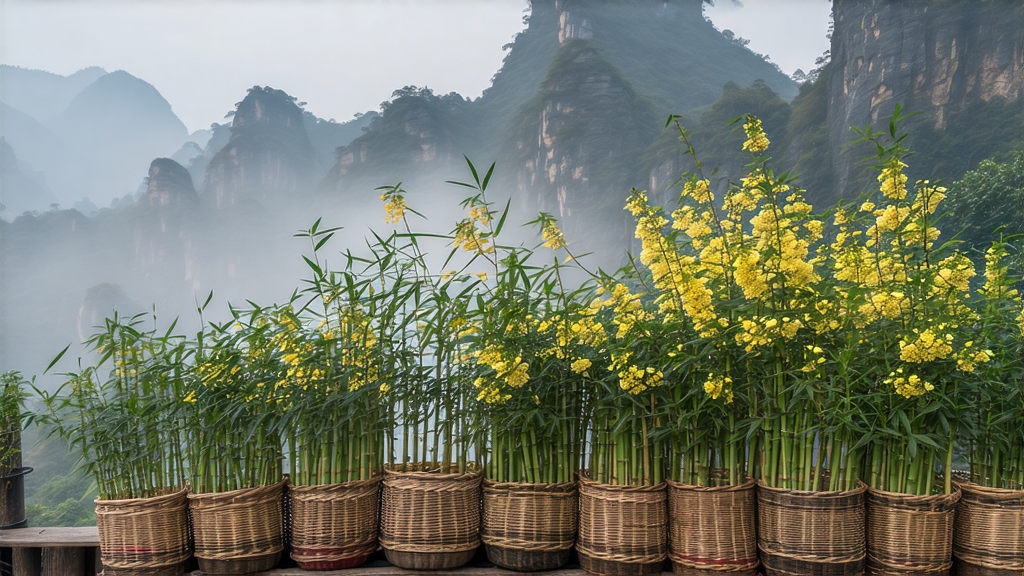
Tucked high in the mist-veiled Dabie Mountains of western Anhui Province, Huoshan Huangya has quietly captivated Chinese emperors, Tang-dynasty poets and modern tea aesthetes for thirteen centuries. Unlike the better-known greens of Longjing or the rock oolongs of Wuyi, this “yellow among greens” remains almost invisible abroad, its production so tiny that an entire year’s harvest rarely fills a single shipping container. Yet within the arcane world of yellow tea, Huoshan Huangya is the benchmark, the style scholars cite when defining the elusive category that sits between green freshness and black depth. To understand it is to witness a living museum of Song-era craftsmanship, a tea whose very colour is coaxed, not added, through a risky dance of heat, humidity and time.
Historical whispers first place the tea in the Tang dynasty (618-907), when tribute lists from Huo-shan County arrived at Chang’an along the same courier roads that carried Lushan Yunwu. A 741 CE stele records “a tea of pale jade liquor, naturally sweet, presented in sealed bamboo tubes,” a description that matches modern cupping notes so precisely that historians believe the basic cultivar and processing have survived intact. By the Ming, the county magistrate was required to deliver 200 taels of the finished leaf to the imperial household within ten days of Qingming; failure meant demotion. The Qing annals add the telling detail that the tea had to “turn the colour of golden millet” before it was deemed worthy of the Dragon Throne, the earliest written reference to the controlled yellowing that defines the genre. After 1911 the tribute system collapsed, and the craft nearly vanished during the war-torn 1940s. It was resurrected in 1972 when a team of Anhui agronomists located three octogenarian tea masters who still remembered the secret “men-huang” (sealed-yellowing) timing. Today only 280 households across six micro-valleys are certified to produce authentic Huoshan Huangya; their entire annual output is roughly 12 metric tons, less than a single morning’s harvest from a large Fujian oolong farm.
The tea belongs to the small-leaf Camellia sinensis var. sinensis, but local growers insist the real secret is the mountain clone known as “jiu-long zhong,” literally “nine-dragon middle,” a low-yield bush that pushes buds later in spring, accumulating extra L-theanine under cool night temperatures. Fields lie between 600 and 800 m on steep granite slopes; morning fog refracts sunlight into a soft, diffused glow that slows photosynthesis and tightens cell walls, concentrating aromatic precursors. Soils are acidic, rich in quartz and feldspar, and drain so quickly that roots are forced to dive deep for water, mining trace minerals that translate into a signature flinty note European tasters often liken to a gentle Chablis.
Harvest window is brutal: only the single bud or bud-with-immediate-leaf picked before April 5 qualifies for the top grade “te ji” (special). A skilled picker gathers barely 500 g of fresh material per hour, and it takes 55,000 buds—an entire day’s labour for five people—to finish one kilogram of dry tea. The pluck is placed in shallow bamboo trays lined with goat-skin parchment, a practice unchanged since the Song, and carried downhill on foot within two hours; any delay oxidises the tips and ruins the subtle colour shift that follows.
Primary kill-green is done in iron woks heated to 160 °C, but the toss is lighter and shorter than for green tea: 2–3 minutes instead of 4–5, just enough to denature polyphenol oxidase while preserving 8–10 % residual moisture. The leaf must remain supple for the critical next step, “men huang,” literally “sealed yellowing.” Piles of 2–3 kg are wrapped in steamed cotton cloth, then placed inside a wooden chest lined with fresh chestnut leaves whose natural ethylene is thought to catalyse chlorophyll breakdown. The chest is slid into a charcoal-heated niche maintained at 28–30 °C and 75 % humidity for 70–90 minutes. During this narrow window the leaf turns from jade to pale primrose; acids convert into pectins, tannins polymerise, and a hay-like sweetness emerges. Open too early and the liquor stays green and astring